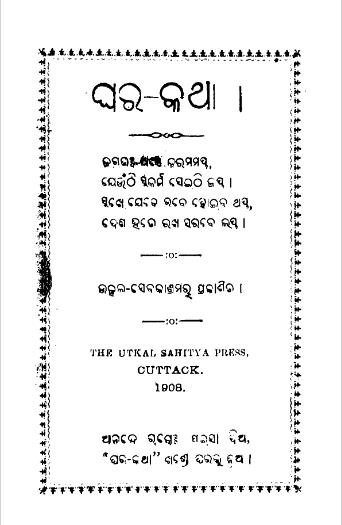Published in 1908, Gharakatha stands as a remarkable piece of literature in the gamut of early 20th-century Indian writings. This book not only serves as a reflection of its time but also provides a unique perspective on the socio-cultural landscape of India. Exploring themes of domestic life, community relationships, and the everyday experiences of individuals, Gharakatha offers valuable insights into the lives of people during a period of significant change and upheaval.
The early 1900s in India were marked by social reform movements, colonial rule, and the burgeoning influence of nationalism. Amidst these sweeping changes, literature emerged as a powerful medium for expressing the nuances of daily life, culture, and social dynamics. Gharakatha, which can be translated as Home Stories or Tales of the Household, captures this essence by focusing on the intimate aspects of life that shape human experience.
Gharakatha is characterized by its exploration of domestic narratives, showcasing the lives of individuals and families within their cultural context. The book includes a collection of short stories, anecdotes, and reflections that evoke the warmth and complexities of home life. The narratives encompass a diverse range of characters—from homemakers and artisans to children and elders—each contributing to the overarching theme of community and familial bonds.
Through its vivid storytelling, Gharakatha paints a picture of everyday life, encompassing joys, struggles, and the intertwined relationships that define human existence. The tales often highlight moral lessons, social values, and cultural practices, serving as both entertainment and education for readers.
One of the central themes of Gharakatha is the exploration of gender roles within the household. The book delves into the dynamics between men and women, painting a realistic picture of domestic life at the time. It addresses challenges faced by women, including societal expectations, familial duties, and their resilience in navigating these challenges. This focus on women’s experiences was particularly significant during a time when the women’s rights movement was gaining momentum in India.
Additionally, the stories in Gharakatha often reflect broader societal issues, such as education, poverty, and social inequality. By weaving these themes into the fabric of domestic narratives, the book encourages readers to reflect on the larger socio-political landscape impacting daily life.
The writing style of Gharakatha is accessible and engaging, making it appealing to a wide audience. The use of local dialects and idiomatic expressions adds authenticity to the narratives, allowing readers to connect with the characters on a personal level. The book’s structure, often composed of interconnected stories, creates a sense of continuity that mirrors the interconnectedness of community life.
Though not as widely recognized today, Gharakatha made a significant contribution to early Indian literature. It paved the way for future writers to explore similar themes within domestic settings, emphasizing the importance of everyday experiences in understanding societal dynamics. The book serves as a precursor to later works that sought to highlight the lives of ordinary people, making it a valuable part of India’s literary heritage.
Books Info
| Books name | Gharakatha / ଘରକଥା |
| Author | NA |
| No Of pages | 15 |
| Publisher | NA |
| Publication | 1908 |
| Printed At | The Utkal Sahitya Press |
| Distributor | NA |

